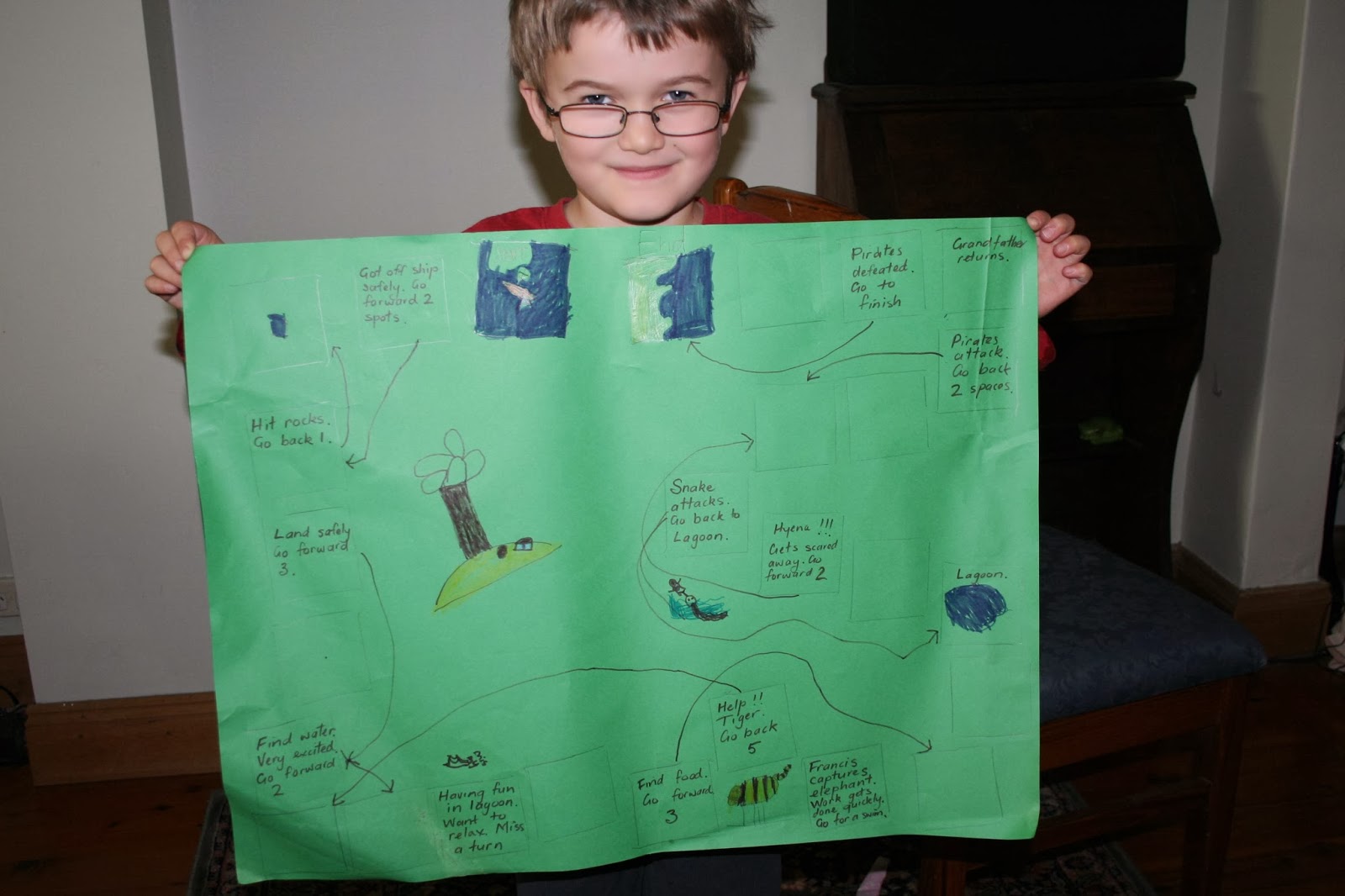Instead, of making homework such a ritual and repetitive waste of time why not assign homework as a way for children to learn new things, develop unique knowledge and experience and to grow in confidence as learners.
Here are 5 Words that can shape exciting homework:
 |
| Above: Sam goes fishing! |
IMAGINE
EXPLORE
DESCRIBE
DRAW
MAKE
Each of the above key words can offer gateways to learning. These simple words open up possibilities to expand learning, while words like copy, memorize, drill, and practice tend to reflect practices that often limit options. Of course, the latter are still ways that we can learn, memorization, some drill etc., have a place in school learning. But at the end of a full day at school, they should not be the key focus of homework. Instead, as a parent I'd suggest that you offer options for your children that will open their world to discovery, new things and different ways to reflect on their learning. In my view, learning at home should expand upon what happens at school, not simply mimic or copy it.
Some simple ideas to illustrate
1. Imagine
 |
| Above: A cubby made from a box |
- Where it is located and how they might have got there?
- How they will get food for night?
- How could they find a water source?
- What will they eat?
- Will they need any protection?
- How might they get back home?
2. Explore
Ask your child or children to choose a piece of ground that is roughly 6 square metres in area (3 x 2 metres) in their back yard or a nearby park.
Have them observe this area. Ask them to:
- Draw the space.
- Identify and label living and inanimate objects that are located on the ground. If possible give them some small hand tools to dig a few test holes (give them some simple specifications, e.g. no hole bigger than a breakfast bowl).
- With permission allow them to select 3 plant samples. Draw them. Smell them. Touch them and describe them using single words.
- Ask them to record any living things.
- Draw what they find and label them.
In keeping with the above backyard theme, why not ask your child or children to take part in the Aussie Backyard Bird Count (if you are from another country you may be able to do something like this in your own country). This is occurring from 23-29 October in Australia, and is part of National Bird week. In essence it asks people to observe for 20 minutes per day in their own back yard, or somewhere in the wider community. There is an app that you can download that makes it very simple. The hope is to we will learn about the bird life using this community based sampling method. It will also raise awareness of our wildlife and encourage a love of birds.
This is designed to be a 20-minute task each day for 7 days, that you would perhaps need to help them with to start. This would work well for children aged 4-6 with some assistance and perhaps independently for children aged 7+. Of course, you could do your own version of this.
4. Draw
Drawing is a wonderful way for children to express their imaginations, or to simply try to represent the world in a different way. While in much of our life we use words to describe what we see, to reflect on our experiences, share some aspect of learning, record the events of our life and so on, drawing can easily substitute for words or be used in association with words. The drawing below is one of my favourite drawings from one of my grandchildren. I was visiting the Aquarium in Sydney with him aged 4 years. When we got home he drew this picture. When I asked him to describe what he had drawn he pointed out how this was a drawing that showed how the fish might have seen us as they looked out through the glass. To draw this, he needed to imagine what it would look like from the vantage point of the fish! The drawing shows how the fish saw me as we wandered around the aquarium. What I love about this drawing is that it offers an insight into how his young mind was working. It also shows something of how he was reflecting on his experience, that he was thinking 3 dimensionally, and may well have been empathizing with the fish in the aquarium.
 |
| Above: A Drawing by a 4 year old who is taking the perspective of an aquarium fish |
 |
| Above: Using modelling clay to make real & imaginary animals |
 |
| Above: Using a different way to show the sea creatures observed |
 |
| Above: A game that Sam made that follows a story sequence |
Other posts that address creativity, imagination and play (HERE)
A post on 29 children's books that feature birds (HERE)
